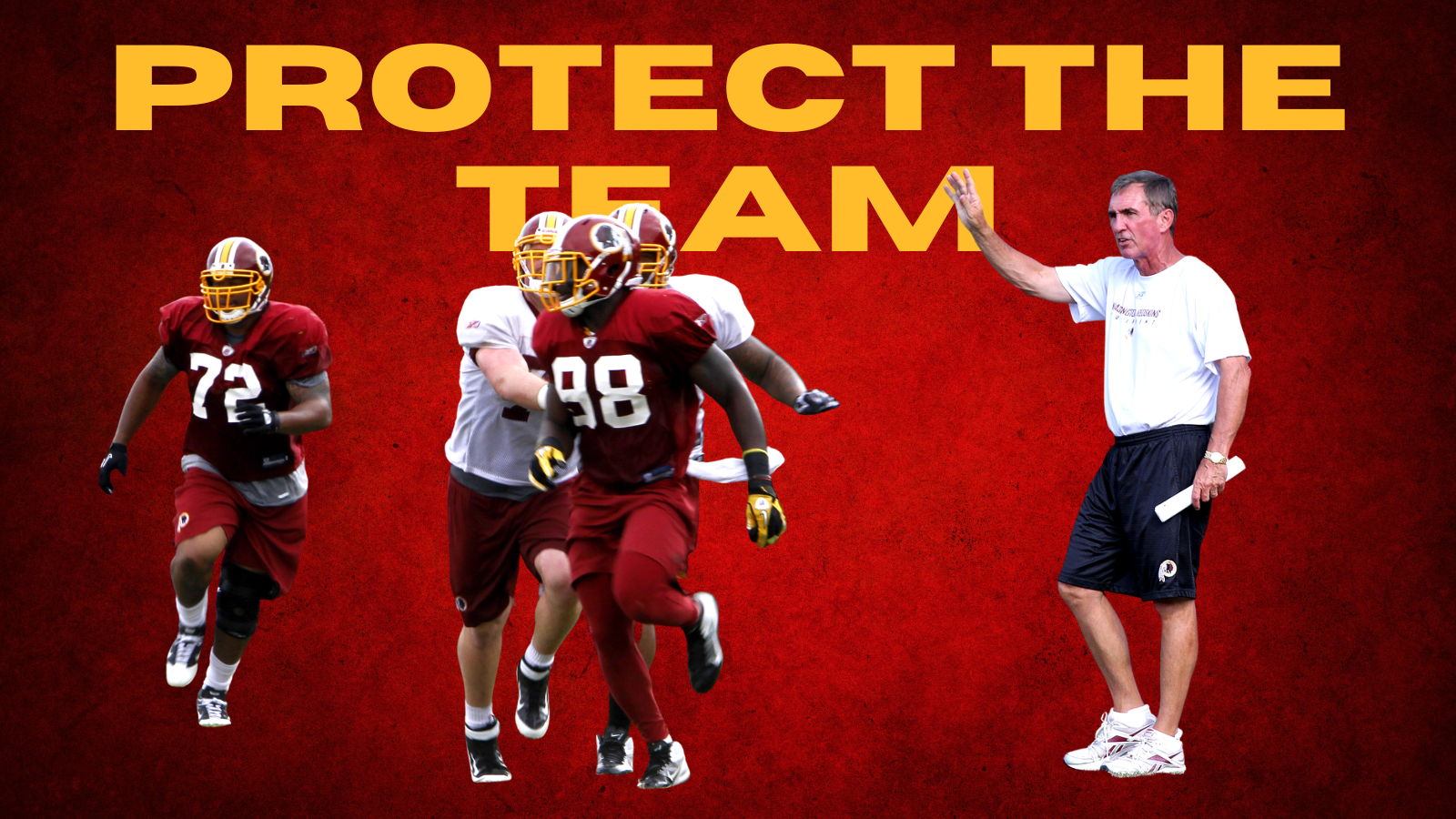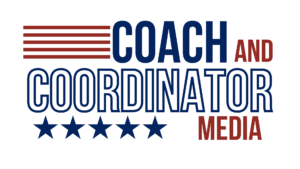
By Keith Grabowski
I had a unique opportunity in the summer of 2019 to head to California and be a part of the QB Collective. It’s a camp run by NFL coaches for the top high school QB’s in the country. The coaches give the quarterbacks a glimpse into how they do things, from the way things are installed all the way to what they do on the field with their different drills. It was an incredible experience, and part of that was a presentation that I sat in on with Hall of Fame Coach Mike Shanahan.
One of the main objectives that Coach Shanahan talked about was the idea of “protect the team.” And in this particular presentation, the video he used was of his son, Kyle Shanahan, installing this concept with his team on film. Coach shared plenty of examples on film, and Kyle’s voice was heard as they went through and installed this idea of “protect the team.”
This concept is vital to a team avoiding unnecessary injuries that put the team’s season in jeopardy. This is critical. This is something every coach needs to think about heading into the season and how it can best serve the coaching staff as well as the players.
I had the opportunity to talk with Coach Shanahan after his presentation and spend a few minutes with him, especially on this particular idea. I think it’s so important. I think this is something you need to think about installing with your team and making it very intentional.
The ideas presented here can make a difference, but we must be truly intentional in installing them and making sure they’re part of what we do. Again, as Coach Shanahan pointed out, protect the team is the number one objective.
So what does “protect the team” mean?
Well, in practice, we’re not going to take any unnecessary shots on teammates. We’re going to stop and take ourselves out of situations that could cause injury if we finished a teammate off in a block or tackle. Certainly, there are going to be those points in practice where it is full go. But even in those periods, if there’s the opportunity to really take a shot, something that might be detrimental to the future of the team because you lose a player, it’s something you want to avoid.
I know this is something that constantly has been a focus in my coaching career, and especially as I got into the college level. Really focusing on how do we keep those players ready for game day and not lose them in practice. A colleague of mine, our defensive coordinator, and very good friend Jim Meyer, used to always say, “Let’s not sharpen the sword dull.” The idea that we certainly want to get better in practice, but we want to have everything available 100% for game day. That’s the focus behind this idea, which Coach Shanahan presented. This concept of protect the team is something that was part of the day one install for his son Kyle and was the first thing that Coach Shanahan started speaking about to these quarterbacks.
Don’t take a shot at your teammate
The very first thing that Coach Shanahan pointed out on video was the opportunity to take a shot on an offensive player. This also applies to a defensive player who is not in a position to protect himself. It’s one of those that definitely is a win for the one taking the shot and a loss for that guy who’s taking it. The player should be avoiding those situations, getting to that point where they can take the hit, and shutting it down, not finishing through on a teammate.
The argument against this certainly could be, well, if we’re not training that in practice, then it’s not going to happen in the game. I really believe you have plenty of opportunities to be able to practice that safely, and a lot of it really is instinctual. Our players are going to continue to be aggressive even if we take those hits out of practice.
We’re not softening our game if we take some of these hits out of practice and more and more of the rules are taking away some of these hits anyway. Being able to do it in a controlled way or to get to a point where you know it’s going to happen and shutting it down is very relevant to what we’re doing right now. It’s just good practice for us in protecting our own players.
Don’t hold on defense
Coach showed asituation where that offensive receiver makes a break, maybe it’s a double move, maybe he’s able to get on top and start getting away, but he gets held by the defensive back so as to not get beat. All defensive backs coach this. It is a last ditch effort to stop a big play or touchdown, and it certainly has a place in the game. However, holding at that point when a player is in full stride again can cause cause both players either to get rolled up, to go to the ground, to stretch and strain in a way that maybe is going to put them at risk for some kind of soft tissue injury, whether that’s a rolled ankle or a knee. And so situations on that defensive holding in practice, we want to avoid it.
Establish who has Right of way to the ball
I know years ago we implemented a “right of way” in practice, especially as we got later into the practice week. it was the right of way to the ball that we had those situations where maybe it was that 50-50 ball or maybe it was that opportunity where a defender was getting beat to do something to hold that offensive guy and keep him from making the play. But we got to a point with our scout team, especially during the season where we were training them, that on these particular days or in these particular periods the offense has the right of way to the ball. Unfortunately, we came to this practice standard the hard way. We had a Thursday practice where one of our starting receivers got tied up with somebody because they were both going to make a play on the ball and it really wasn’t necessary on that particular day. Yes, the ball was a little bit under thrown. We certainly don’t want that to happen. But in that situation we want to define who the winner is going to be.
We would announce at the beginning of a drill or period that the offense has right away to the ball. That would mean that those defenders, unless there was some kind of a clear interception, the offense would be allowed to finish their play. Any opportunity where there was going to be a play in traffic, with two guys going up for the ball, the defender could stay in phase and just run with him, but wanted at all costs to avoid that contact where they would get tied up. We had that opportunity in this particular case where the receiver strained his MCL as a result of that play. We want to avoid those situations at all cost.
This is one example for one position. The unique part of this is that it wasn’t focused just on one position or a couple of positions, Coach went through and pointed out things for every single position.
No holding in the interior
Holding on the offensive line is another example. The whole idea upfront was if you’re beat that you don’t need to necessarily do something by holding or something illegal to try to win that play. It’s going to get caught, maybe the coach misses it., but what we’re trying to train here is a standard that we do not hold in practice and that is certainly an idea we want carried over to the game.
Don’t finish off a teammate – pancakes in game only
If a teammate was off balance, don’t finish him off. Get him to that point and know that he can be put on his back. He’s beat. That’s where the blocker should throttle it down and both players shut it down because at that point he knows he’s beat as well.
As with the “right of way for receivers, this should be defined these at the beginning of periods or drills. Like “thud” or “tag off” with tackles, this standard should be named and taught as well. Looking at the practices I attended this past spring, every single coach would talk about either the tempo, some of it called the tempo of this period, but whatever that might be, the levels of contact, whatever you’re going to do, define that at the beginning of the period and what’s the objective for that so the players know.
A Halo of Protection for the QB
We put him in a different colored jersey and there’s an expectation for the QB not being hit, but that does not mean that behavior that goes against protecting him is avoided unless we coach it. To point this out, Coach used an example of a bullrush. In this situation, the defender didn’t hit the QB but he drove the offensive lineman into him. I can think of an example from when I was a player. This was in high school, and we lost our quarterback in practice because an offensive lineman got driven back into him. He didn’t get hit, but when he followed through on his throw, his thumb went right into the helmet of that player and he broke his thumb. We lost him for four weeks of the season.
And that was a huge loss for us, especially at the high school level. At many levels maybe only we have one guy who’s that level or that caliber of player to lead our offense. So we want to think about all those kinds of things, define what the standards are, especially the ones that are going to make a difference to the team’s success in games.
Another example is when the defensive lineman wis ble to find that gap and come through clean. The standard is to go past the QB, not stand in front him. Don’t buzz the quarterback, really veer off, get out of the way, stay out of any situation which would cause contact.
To enforce the standard be sure to acknowledge the defender who won. Saying, “I see you Joe” lets him know you saw his performance, and he is more likely to maintain the standard in the future.
The Chain Reaction – No 22 Car Pile-Ups
Protect the team probably is most relevant in 11 on 11 situations when there’s a lot more moving parts. Coach showed an example of kind of that chain reaction where one guy continues, finishes an off balance player, that guy falls and goes into the knee of another player who falls and rolls into yet another.
It’s like a car wreck on a freeway where all these cars are banging together. The idea was within these situations where it gets more and more chaotic, were going to want to have our players able perform in these periods in a controlled way.
And the idea, again, a protected team, certainly when you have isolated drills, when the space is clear and you’re able to work on some of those things like finishes, they’re a lot safer in your drills than they are in the eleven period. Speaking of drills, we recently had a podcast on banned drills in the NFL and I did have the opportunity in this camp to talk to several NFL coaches about that idea of the ban.
Banned Drills
The NFL has a list of banned drills. I mentioned it in a podcast that the NFL really hasn’t done those for years, so why are they banning them? Why are they making this public announcement that they shouldn’t be in NFL practices? I think a lot of that, and especially in talking to these guys, they confirmed it, that this is designed to help us take a look at that, to realize that we don’t need, for example, that Oklahoma drill where we’re aligned on the same exact plane with no defined entry point for the ball, with no defined gap responsibility. Then we have two players who essentially end up with head to head contact and we want to avoid that at all costs.
Does it Happen in the Game?
Those coaches agreed with me that if it doesn’t happen in football, then it doesn’t have a lot of value for them as a drill. Now, I did offer some alternatives in that podcast. How do you make those drills better? How do you make them more relevant to the game and essentially eliminate some of those risks that are taken in the traditional way they’ve been taught, so please take a listen to that podcast as well.
Have a Threat of Run or Pass in Group and Team Drills
The other idea that came up in talking to two NFL offensive line coaches, was the idea of team run versus inside run. Those guys really are not doing the inside run anymore. Instead, that it becomes a team run period where there’s that opportunity for some play action. I know at the college level, and watching practice in the spring, they had a lot of RPO installed in there. They would throw some bubble screens to the receivers or even quick game, as well as some of those play action shots and boots and naked.
So thinking of a team run rather than that situation where there’s only one thing happening where you take the read out of the game, not only makes it more effective from that standpoint of making it really, truly applicable to game day. Players don’t know on game day that it’s going to be run or pass on a particular play. Now, they may have those tendencies, but at the end of the day, players have to go through their reads on that side of the ball. The offense, obviously, is going to face a different demeanor from that defense when there is that opportunity of run and pass. The team run period, which is, again, a combination of run and play action becomes a very effective way of protecting the team.
Review and Instruct
Being able to review these things daily, especially at the beginning of the camp is very helpful in teaching and installing the standards. when they start looking at these things, when they start protecting each other, I think that’s going to be a great situation.
The key is to be able to get your players on the same page with the coaches. If a practice is not filmed, then a coach can orchestrate these scenarios in a walk through or demo type of setting to give the exact visual and explanation.
Coach Shanahan pointed out that the standards are reinforced throughout practice. They spent time on it every single day pointing out examples.
Eyes are on us as coaches
Coach Shanahan pointed out an example where a receiver caught the ball coming across the middle and he was about to make that turn up field. There’s a safety on him with an angle and he just cleaned him out. One of the things Coach pointed out in the video is there was a coach celebrating that hit. Obviously that’s a situation that we’re not only teaching this to our players, we’re also teaching and installing this with our coaches and giving some expectations to what we want. That hit was not necessary in practice. If we are making “protect the team” part of our culture, then that hit cannot and should not be celebrated by anyone, especially a coach.
Not only is this training the players about what is right and wrong, it’s also training your staff to understand exactly what it is. Something Coach talked about is that it needs to get to the point where the players are coaching it and demanding it from their teammates.
The Payoff
The lesson to be learned from Coach Shanahan is that these must be installed, taught and reviewed just like any play in the playbook.
Establishing standards, especially those that protect the team will prove beneficial both in the short term at the beginning of camp and as the season progresses.
Listen to Our “Protect the Team” Episode:


